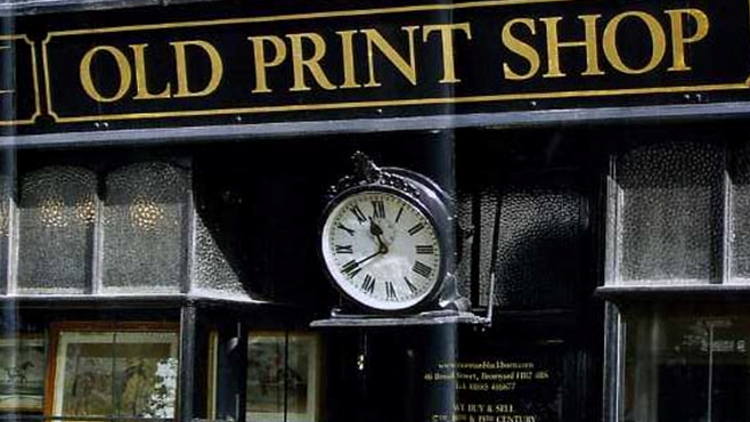We are getting closer to the holiday season and the temperatures have started to drop fast in Western Europe. The cold wind is picking up and I’m getting the driveway ready for Santa and his reindeer-pulled sled to come and join us. We definitely don’t want to miss him this year; when the cold arrives, we should be ready to warm up with some hot chocolate and a burning fireplace.
On the subject of getting warmer, I immediately thought of calenders and heat presses for the textile industry. Dye sublimation is becoming standard in the textile industry today and the need for information is greater than ever before. Today, more people are using sublimation technology than ever before; not only for sportswear and fashion, but also for soft signage and home interiors. Some are using dye sublimation for rigid and promotional items – with great success I might add. As you can see this is only the beginning of a new and thriving industry.
There are many interesting choices you will need to make if you want to start in this new printing world. Questions like: are you using paper transfer or are you printing directly to the fabric? Dye sublimation becomes more complex with the choices you make and choosing the right heat press becomes even more difficult.
The world of heating devices is a bit like a forest where there is only one tree that would fit your company – but how do you know which tree is the right one? Choices, choices and more choices.
So, let’s talk about the basics of heat press technology. There are currently three types of heat presses on the market: oil or infrared based drums; indirect infrared heating ovens; and finally, a flatbed heated by electrical resistors inside the pressing plate.
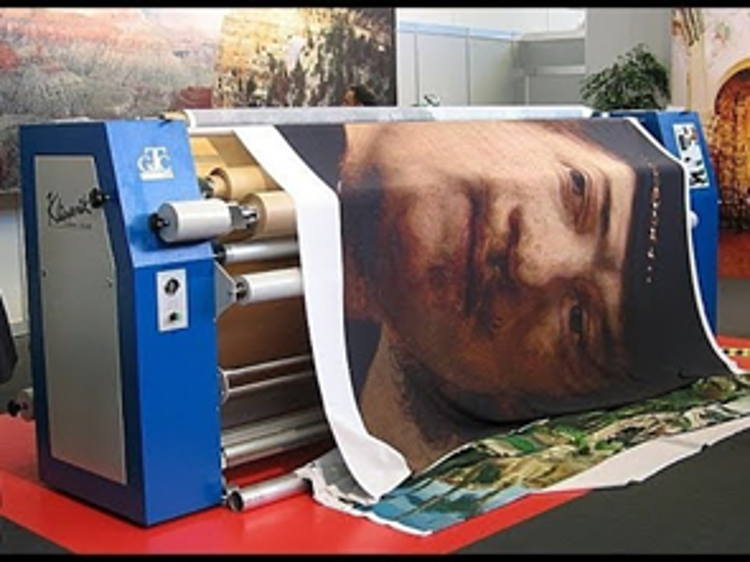
If we start with the oil-based drums, they are originally made for the roll-to-roll markets for lamination, bonding and engraving/embossing textiles. These units were really never really developed for the dye sublimation markets.
Many modifications had to be made to make them suitable for the textile dye sublimation markets. Today they are newly developed for this market. Many changes to the roll-up and roll-off feeders have been made and much better temperature control has been implemented.
So why a drum? Well, if we want to have a stable heat signature across the whole width, oil-based devices are the most stable around. When it comes to heat distribution a drum is the best you can get. This is important for dye sublimation as we want to have the same colour edge-to-edge coming off the press and need to have a great amount of stored energy in the calender to make this work. Oil is a great holder of energy and this combination of a drum and the oil makes it right. The constant temperature makes this the best device for all roll-to-roll transfer and direct printing sublimation.
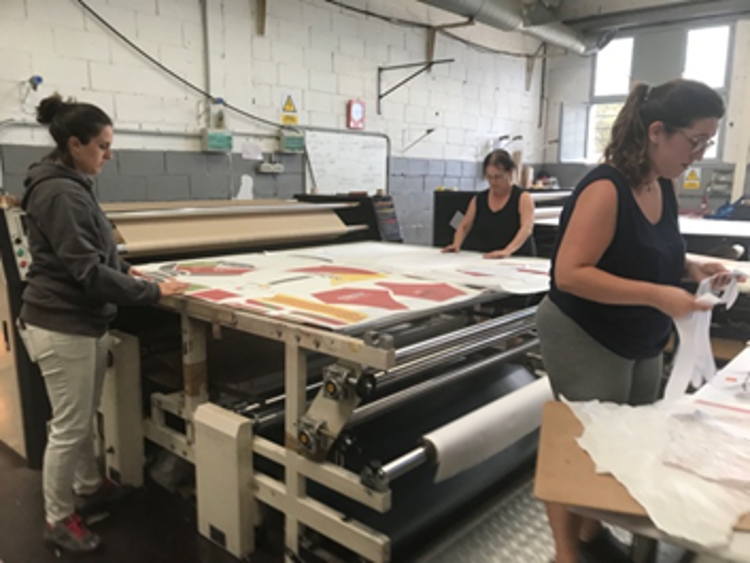
As roll-to-roll devices can also use a placement table in front of the heat press, the machine can be used for lay-up processing of pre-cut shapes for sportswear. By the way, when we talk about sportswear, we include winterwear, swimwear, beachwear and much more.
The transfer paper becomes the conveyer belt for the fabric. Pre-cut shapes are placed on the right spot and your items will be sublimated (more on that later).
OK, how about the infrared heated drum? Infrared units have some benefits for smaller production: they are a lot cheaper to buy; they can heat up and down really fast due to the lower residual heat in the drum; and they are much lighter so can be placed almost anywhere. This means you don’t need the enormous energy consumption to heat up the oil for storing as you do in oil-based drums. Trust me, the oil-based drums do consume a lot of power. For large production this is OK but for smaller production levels you might consider using an infrared device. Just one warning though: be sure you have the right quality Nomex belt on the press as you will be sorry if you use a cheap belt!
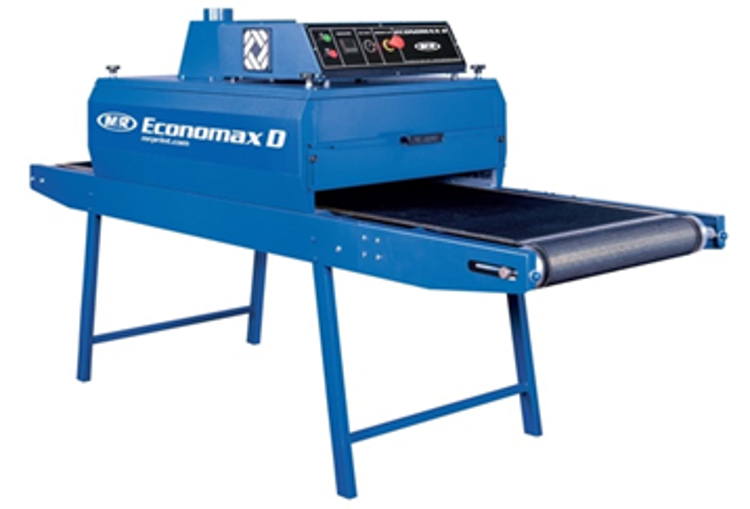
Let’s talk about the heat ovens. They were designed for the garment industry to dry the screen inks on T-shirts and polos. With some internal modifications, the temperature was raised to the dye sublimation region of 195 degrees Celsius. The big disadvantage here is that the heat dissipates very fast and there is little consistency in the overall heating. Great for drying screen-printed garments but for dye sublimation, you would need more stability to guarantee the quality. I would not advise this type of press to anybody.
Last but not least: the flatbed heat press. This is a great combination for flexible and rigid substrates. If you are working with rigid media – such as photographic images on metal, wood or other polyester-coated media – this is your device. You can also use it for sportswear pieces and to lay-up shapes.
The size of these presses can be impressive. Did you know that snowboards, 2.5-metre skis and even big metal wall coverings are made with flat presses? Many other winterwear items are also made this way – all printed with dye sublimation transfer paper and transferred on the substrate.
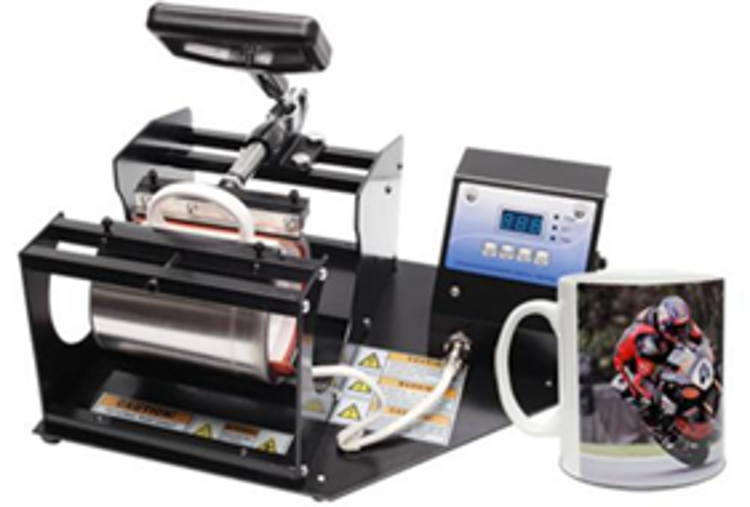
Flat presses are also found in round shapes. Yes, strange, but think about sublimated mugs or 3D objects. Sublimation on mugs has been a big business around the holiday seasons for many years.
If you need a flat press technology in a different shape it’s probably already available. If there isn’t a solution, think about using a kitchen air fryer. It can be set to 195 degrees and in 30 minutes you can sublimate your mugs and other items! They are basically infrared ovens – just smaller and cheaper. But let’s keep it professional…
There are more uses for flatbed presses outside the dye-sublimation world. For example, if you are a small shop and want to print names and numbers on the back of sports kits, you could use a small desktop flock cutter, cut the number and use a small sized heat press to place these onto the garment.

There are many types and kinds but the alligator mouth (see image) and the straight down ones are the common types.
Small flatbed presses can also be used as a colour testing press, so you don’t need to heat up the big press for just a colour management session. The advantage of smaller heat presses, if you buy a good one, is the constant temperature across the whole heating area due to the fact that the electric resistors that heat the plate are inside the metal part.
The result is lots of choices, lots of prices and lots of possibilities. Just remember that you can see and play with the right calender at your local expert or go to the heat press manufacturer to see the product you want to buy. They will be able to give you the support needed. If not, get well informed: what you will produce today and what might you want to produce tomorrow? How much space do you have? Are you going to print on 3 or 5 metre-wide printers? Please invest in knowledge before entering the black hole – it’s better to be safe than sorry!
One final thing: a calender is a 10 to 15-year device that does not need to be replaced frequently. It’s low on maintenance costs and you only need to change the belt every few years if you produce a lot. Basically, it’s a capital investment like a house.
Buy and invest in the right size just like you would do if you bought a home.
Just remember if you’re buying a home, get one with a fireplace as you need a place to hang all your newly textile-printed stockings!
I wish you all a happy holiday season.
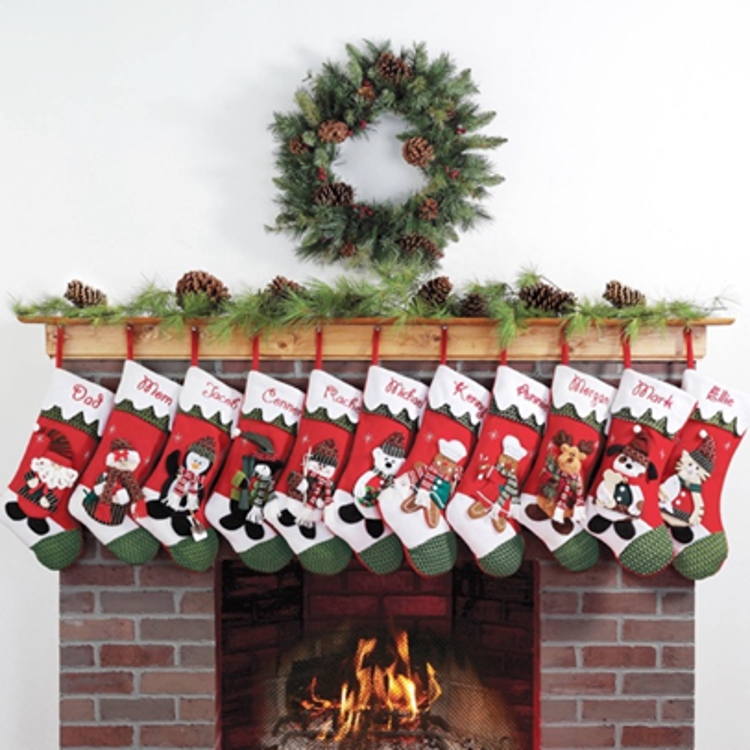
Mike Horsten
ZEMT Consultancy and freelance writer
mike@zemt.info



